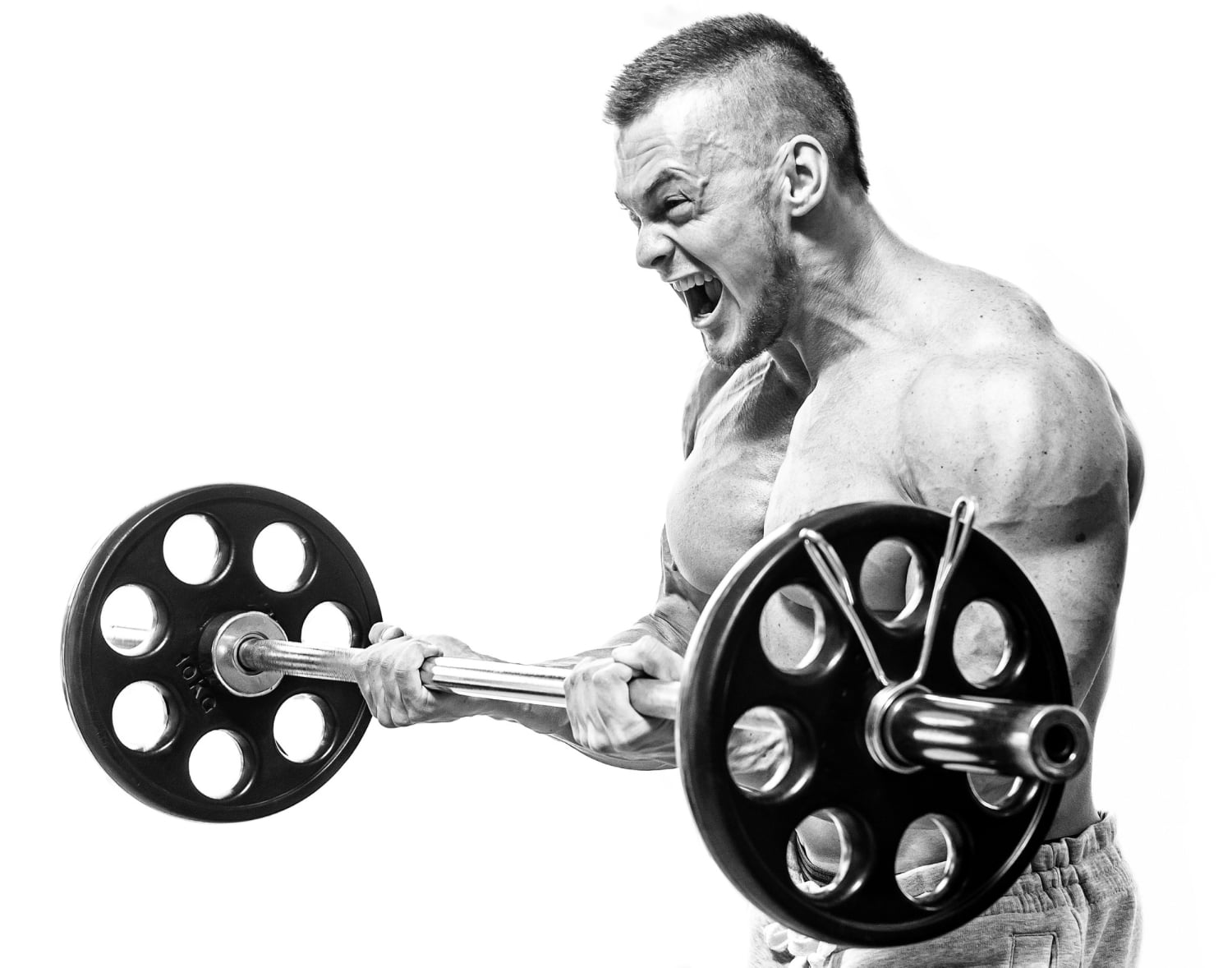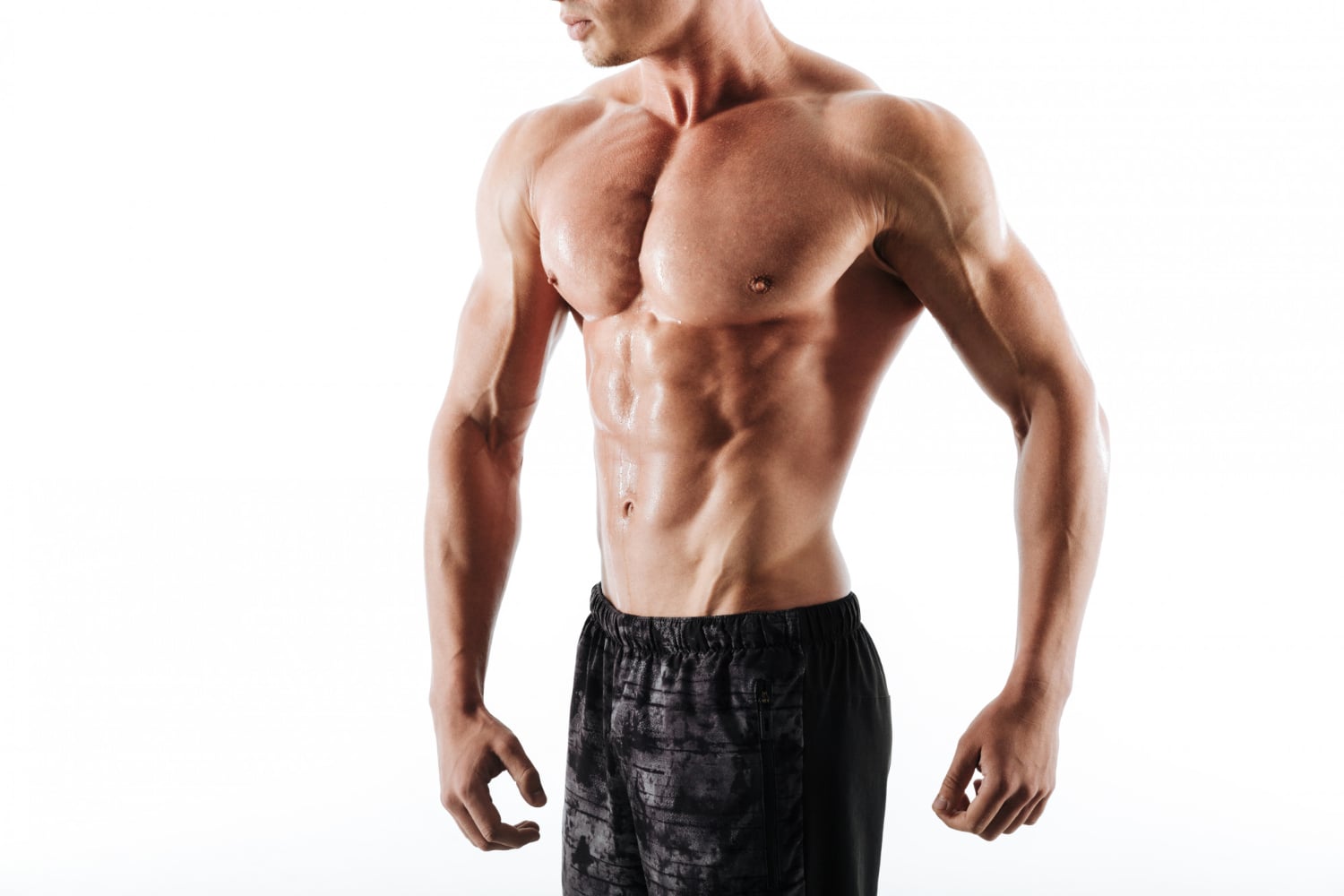Integrating Abs and Forearms Workouts into Your Exercise Regimen


Achieving a well-toned, strong physique requires a balanced approach to muscle development.
Two crucial muscle groups that often get overlooked are the abdominal muscles (abs) and the forearms.
Not only do these muscles play a significant role in overall strength and stability, but they also contribute to the aesthetic appeal of a fit body.
This article will guide you through incorporating abs and forearm exercises into your routine, ensuring you achieve a comprehensive and balanced workout.
When embarking on a fitness journey, it’s easy to get caught up in the pursuit of developing the more prominent muscle groups like the chest, back, or legs. However, the real gems of functional strength and aesthetic appeal often lie in the details, particularly in the development of the abdominal muscles and forearms. Ignoring these crucial areas can lead to imbalances, diminished performance, and a physique that looks incomplete. In this expanded section, we delve deeper into why incorporating abs and forearms into your routine is non-negotiable for anyone serious about their fitness.
Abdominal Muscles: The Core of Your Strength
- Support and Stability: The abdominal muscles, often referred to as the core, are pivotal in providing support and stability to the entire body. They act as a central link between your upper and lower body, ensuring that movements are smooth, coordinated, and efficient. A strong core allows for better transfer of energy, making every lift stronger and every movement more powerful. This is not just crucial for athletes but for anyone engaging in daily physical activities.
- Injury Prevention: A well-trained core is your body’s best defense against injuries, particularly in the lower back region. The abs support the spine, and when they are strong and functional, they take off excess load from the lower back, preventing strains and injuries. This aspect is crucial not just for weight lifters but for individuals of all ages and professions, as back health is vital for a good quality of life.
- Improved Posture: Strong abdominal muscles contribute significantly to good posture. They hold your body upright, reduce slouching, and promote an aligned posture. This not only makes you look taller and more confident but also helps in reducing neck and back pain associated with poor posture.
- Enhanced Athletic Performance: For athletes, the core is the powerhouse. All explosive movements originate from the center of the body, and a strong core ensures that these movements are executed with maximum power and precision. From sprinters and jumpers to swimmers and cyclists, a well-conditioned core is a common denominator among top-performing athletes.
Forearms: The Gateway to Grip Strength
- Grip Strength: Your grip is your direct connection to the weights, and hence, building formidable forearms is non-negotiable. A strong grip allows you to hold on to heavier weights, perform more reps, and engage more effectively with various exercises. This directly translates to increased muscle activation and growth in other areas of the body, showcasing the interconnected nature of muscle development.
- Functional Daily Activities: Beyond the gym, forearm strength is vital for various daily tasks such as carrying groceries, opening jars, or performing any activity that requires grip strength. A strong grip ensures that you are well-equipped to handle these tasks with ease, promoting independence and reducing the risk of injuries.
- Aesthetics and Symmetry: In the bodybuilding and fitness world, aesthetics play a significant role. Forearms are one of the most visible muscle groups, and well-developed forearms contribute to a balanced, symmetrical physique. They add to the appearance of overall strength and ensure that your body looks proportional from top to bottom.
- Endurance and Stamina: Strong forearms enhance your endurance and stamina during workouts, allowing you to train longer and harder. This is particularly crucial for exercises that require prolonged grip strength, such as deadlifts or pull-ups. By building endurance in the forearms, you ensure that your grip doesn’t give out before the rest of your body, leading to more productive workouts.
Integration and Balance: The Way Forward
Understanding the critical roles that the abs and forearms play in both functional strength and aesthetic appeal highlights the importance of integrating them into your workout routine. These muscle groups act as the foundation upon which the rest of your strength is built, ensuring balance, stability, and injury prevention. As you strive for a well-rounded and impressive physique, remember that the details make the difference, and a comprehensive approach to muscle development is key.
By prioritizing abs and forearms, you are not just investing in your strength and performance but also in your long-term health and quality of life. Make these crucial muscle groups a staple in your fitness regimen, and watch as your body transforms into a powerhouse of strength, stability, and aesthetic perfection. The road to a balanced, strong physique is through acknowledging and training every muscle group, no matter how small, and the abs and forearms are no exception. Prioritize them, and your body will thank you in strength, performance, and longevity.
Engaging in a thorough and varied abdominal workout routine is pivotal for anyone aiming to build a strong, balanced physique. The abdominal muscles, or the core, are at the heart of almost every physical activity you perform, from lifting heavy weights to carrying groceries. Strengthening this area not only improves performance and stability but also contributes significantly to the visual appeal of a fit, well-conditioned body. In this expanded section, we delve deep into various abs workouts, providing insights, techniques, and pro tips to optimize your training and carve out those coveted six-pack abs.
Foundational Abs Exercises for a Solid Core
- Planks: Mastering the Art of Stability
Overview: The plank is a quintessential abs exercise, targeting the entire core region, including the rectus abdominis, obliques, and lower back.
Execution: Maintain a push-up position, with your body forming a straight line from head to heels. Engage your core and glutes to stabilize your body, ensuring that your hips don’t sag or pike.
Pro Tips: Focus on quality over quantity. A well-executed plank for 30 seconds is more beneficial than a sloppy one for a longer duration. To add variety, incorporate side planks or dynamic movements like plank jacks. - Bicycle Crunches: A Twist on Traditional Crunches
Overview: This dynamic exercise engages multiple areas of your abs, including the obliques and rectus abdominis, providing a comprehensive workout.
Execution: Lie on your back, lift your legs, and bring one knee towards your chest while extending the other leg. Simultaneously, twist your torso to bring the opposite elbow towards the bent knee. Alternate sides in a pedaling motion.
Pro Tips: Ensure a full range of motion and controlled movement for maximum muscle engagement. Focus on the quality of each rep, rather than rushing through the set. - Leg Raises: Targeting the Lower Abs
Overview: Leg raises are crucial for hitting the lower abdominal muscles, an area often neglected in standard crunches.
Execution: Lie on your back, keep your legs straight, and lift them up towards the ceiling before slowly lowering them back down, stopping just before they touch the floor.
Pro Tips: Keep your lower back pressed firmly against the floor to prevent straining. To increase the challenge, add a hip lift at the top of the movement or hold a weight between your feet.
Advanced Techniques for Abs Development
- Hollow Body Hold: Building Endurance and Strength
Overview: The hollow body hold is a gymnastic exercise that builds deep core strength and stability.
Execution: Lie on your back, extend your arms behind your head, and lift your legs, arms, and shoulders off the ground, forming a slight ‘U’ shape with your body.
Pro Tips: Focus on creating a strong tension throughout your body and maintain a steady breathing pattern. Start with short holds and gradually increase the duration as your strength improves. - Hanging Leg Raises: Elevating Your Abs Workout
Overview: Performed using a pull-up bar, this exercise not only blasts the abs but also enhances grip strength and shoulder stability.
Execution: Hang from a pull-up bar with a straight grip, keep your legs straight, and raise them to form a 90-degree angle with your torso.
Pro Tips: Avoid swinging and use a controlled motion to raise and lower your legs. Engage your lats and shoulders to maintain stability throughout the exercise. - Dragon Flags: The Ultimate Core Challenge
Overview: Popularized by Bruce Lee, the dragon flag is an advanced exercise that requires significant core strength and control.
Execution: Lie on a bench, grasp the edge behind your head, lift your entire body off the bench, and lower it back down in a controlled manner while keeping your body straight.
Pro Tips: Start with eccentric (lowering) phases only and progress to full reps as your strength improves. Ensure a controlled movement to prevent back injuries.
Balancing Act: Integrating Abs Workouts into Your Routine
A balanced approach to abs training involves incorporating a variety of exercises that target different areas of the abdominal region. Just as with any other muscle group, it’s essential to progressively increase the intensity of your workouts and vary the exercises to continue challenging your muscles and promoting growth.
- Frequency and Volume: Aim for 3-4 abs workouts per week, with a mix of foundational and advanced exercises. Ensure that you give your muscles time to recover, just as you would with any other muscle group.
- Integration with Other Workouts: Abs exercises can be integrated into your overall workout routine. For instance, include a few sets of planks or leg raises at the end of your weight training sessions.
- Mind-Muscle Connection: Focus on creating a strong mind-muscle connection during your abs workouts. Visualize your abdominal muscles contracting with each rep, and focus on the quality of movement rather than the number of reps.
Conclusion
Building a solid, well-defined core requires consistent effort, a variety of exercises, and a strategic approach to training. By incorporating a mix of foundational and advanced abs workouts into your routine, you ensure comprehensive development of the abdominal region, leading to improved performance, stability, and a visually stunning physique. Remember, the journey to six-pack abs is a marathon, not a sprint—stay dedicated, prioritize quality over quantity, and the results will surely follow.
Embarking on the journey to develop powerful forearms and an unbreakable grip is a quest that holds the potential to radically transform your overall training experience. When the forearms are adequately trained, the benefits cascade through every lift, pull, and hold, ultimately leading to a stronger, more resilient physique. Let’s delve deeper into the universe of forearm training, exploring exercises, techniques, and pro-tips to optimize your workout routine.
Unlocking Forearm Potential: A Comprehensive Guide
- Wrist Curls: Building a Solid Foundation
Overview: Wrist curls are a timeless exercise dedicated to isolating and building the forearm flexors.
Execution: Sit on a bench, rest your forearms on your thighs with wrists hanging over your knees, hold a barbell with an underhand grip, and curl your wrists upwards.
Pro Tips: Focus on a full range of motion and controlled movements, feeling the contraction at the top of the curl and the stretch at the bottom. - Reverse Wrist Curls: Targeting the Extensors
Overview: The reverse wrist curl serves as the perfect complement to wrist curls, targeting the extensor muscles on the top of the forearm.
Execution: Adopt the same position as the wrist curl, but this time with an overhand grip, and curl the wrists upwards.
Pro Tips: This exercise may require lighter weights compared to the wrist curls. Ensure you are engaging the extensors throughout the movement. - Farmer’s Walk: A Functional Grip Builder
Overview: The Farmer’s Walk is a functional exercise that builds forearm strength, grip endurance, and overall stability.
Execution: Hold a heavy dumbbell or kettlebell in each hand, keep your chest up, shoulders back, and walk for a set distance or time.
Pro Tips: Maintain a strong, active grip throughout the walk. This exercise also engages your core, back, and shoulders, making it a full-body stabilizer.
Elevating Your Forearm Training: Advanced Techniques
- Plate Pinches: Enhancing Grip Strength
Overview: Plate pinches are a unique exercise focusing on improving your pinch grip strength, essential for daily tasks and certain lifts.
Execution: Place two weight plates together (smooth sides out), pinch them with your fingers, and hold for time.
Pro Tips: Start with lighter weights and progressively increase as your grip strength improves. Maintain a straight posture throughout the hold. - Wrist Rollers: The Ultimate Forearm Burn
Overview: Wrist rollers provide an intense workout, hitting both the flexors and extensors in a dynamic, continuous movement.
Execution: Hold the wrist roller with an extended arm, wind the rope up and down using small wrist movements.
Pro Tips: Ensure you are controlling the movement in both directions for maximum benefit. Focus on steady, controlled rotations. - Towel Pull-Ups: Grip Strength and Upper Body Power
Overview: Integrating towel pull-ups into your routine not only blasts the forearms but also develops formidable upper body strength.
Execution: Drape a towel over a pull-up bar, grab each end of the towel, and perform pull-ups.
Pro Tips: Maintain a strong grip on the towel. This exercise is advanced and requires significant upper body strength.
Strategies for Optimal Forearm Development
- Frequency and Consistency: Just like any other muscle group, the forearms require consistent training. Incorporate forearm exercises 2-3 times per week for optimal development.
- Balancing Act: Ensure you are targeting both the flexors and extensors to create balance in your forearm development and prevent potential muscle imbalances.
- Mind-Muscle Connection: Cultivate a strong mind-muscle connection during your forearm workouts. Visualize the muscles working, focus on the squeeze and stretch, and prioritize quality over quantity.
Integrating Forearms into Your Routine: A Holistic Approach
Building powerful forearms and a vise-like grip requires a holistic approach, integrating both specific forearm exercises and grip-focused variations of other exercises.
- Deadlifts and Rows: These compound movements inherently work the forearms, but you can enhance their impact by using a double overhand grip or adding fat grips to the bar.
- Pull-Ups and Chin-Ups: Incorporate towel pull-ups or simply focus on maintaining a strong grip throughout your standard pull-ups and chin-ups.
- Daily Grip Challenges: Beyond the gym, challenge your grip strength in daily activities. Carry groceries in one hand, use hand grippers, or find other creative ways to engage your forearms.
Wrapping Up: Forearms, A Cornerstone of Strength
Incorporating a comprehensive forearm workout into your routine is an investment in both your training longevity and overall functional strength. Strong forearms enhance your performance across a multitude of exercises, contribute to a balanced, muscular physique, and build resilience against injuries. Dedicate time, focus, and effort to your forearm training, and witness the transformative impact on your grip, strength, and physical capabilities. Remember, in the realm of fitness, every muscle counts, and the forearms are no exception. Prioritize them, train them intelligently, and they will serve you well in your pursuit of strength, stability, and power.
Building a harmonious and well-rounded workout routine necessitates the inclusion of every muscle group, and the abs and forearms are no exception. These two areas play pivotal roles in your overall physical performance and aesthetic appeal. Integrating them into your routine strategically can lead to enhanced strength, stability, and definition. In this comprehensive guide, we will explore various strategies and methodologies to seamlessly weave abs and forearms exercises into your training regimen.
Strategic Integration for Maximum Impact
- Start with a Solid Plan: Having a clear and concise workout plan is the first step towards successfully integrating abs and forearms into your routine. Allocate specific days or segments of your workout solely for these muscle groups, ensuring they receive the focused attention they deserve.
- Balance is Key: Strike a balance between isolation exercises and compound movements that engage multiple muscle groups simultaneously. This approach ensures comprehensive development and functional strength.
- Consistency is Crucial: Like any other muscle group, abs and forearms require consistent training for optimal results. Aim for 3-4 abs workouts and 2-3 forearms workouts per week, adjusting based on your body’s response and recovery capacity.
Leveraging Compound Movements
- Deadlifts and Pull-Ups for Forearm Gains: These powerful compound exercises inherently engage your forearms and grip. Focus on maintaining a strong grip throughout each rep, and consider using fat grips to further challenge your forearms.
- Squats and Overhead Presses for Core Stability: Engaging your core is crucial during these lifts. Maintain a tight, braced core throughout each movement to enhance stability and strength, while simultaneously working your abs.
Targeted Isolation for Definition and Strength
- Dedicated Abs Workouts: Incorporate a variety of abs exercises, ranging from planks and leg raises to bicycle crunches, ensuring all areas of the abdominal region are targeted. Focus on controlled movements, full range of motion, and mindful muscle engagement.
- Forearm Isolation Exercises: Integrate wrist curls, reverse wrist curls, and farmer’s walks into your routine, targeting the forearm flexors and extensors directly. Prioritize form and controlled movements over heavy weights.
Supercharge Your Routine with Supersets
- Abs and Forearms Superset: Combine an abs exercise with a forearm exercise in a superset format, performing them back-to-back with minimal rest. This approach maximizes training efficiency and keeps your heart rate elevated, contributing to improved cardiovascular health and fat loss.
- Example Superset: Pair a set of plank variations with wrist curls, ensuring both the abs and forearms are engaged and challenged in a single training segment.
Time-Efficient Training with Circuits
- Circuit Training for Abs and Forearms: Create a circuit comprising various abs and forearms exercises, performing each exercise for a set time or number of reps before moving on to the next with minimal rest.
- Full-Body Engagement: Integrate other muscle groups into the circuit to create a full-body workout, enhancing calorie burn and overall muscular development.
Utilizing Advanced Training Techniques
- Drop Sets for Endurance: Implement drop sets in your forearm exercises, gradually reducing the weight while increasing the reps to push your muscles to their limits and build endurance.
- Isometric Holds for Core Stability: Incorporate isometric holds such as planks and hollow body holds in your abs training, focusing on maintaining a strong and stable core for extended periods.
Mind-Muscle Connection and Proper Form
- Focus on the Muscle, Not the Weight: Cultivate a strong mind-muscle connection, ensuring you are consciously engaging the target muscle groups during each exercise. Proper form takes precedence over lifting heavier weights.
- Quality Over Quantity: Prioritize the quality of each rep and the effectiveness of each set over the total number of reps or sets performed. This approach leads to more meaningful and sustainable results.
Recovery and Adaptation
- Adequate Rest for Optimal Growth: Just as with any other muscle group, the abs and forearms require sufficient time to recover and adapt. Ensure you are providing them with the necessary rest and recovery to facilitate growth and prevent injury.
- Nutrition and Hydration: Support your training efforts with proper nutrition and hydration, supplying your body with the essential nutrients and fluids required for optimal performance and recovery.
A Symphony of Strength and Stability
Integrating abs and forearms into your routine is a strategic endeavor, requiring careful planning, consistent effort, and a balanced approach. These muscle groups play crucial roles in your overall physical capabilities and aesthetic appeal, and they deserve focused attention within your training regimen. By employing a combination of compound movements, isolation exercises, supersets, and advanced training techniques, you can build formidable strength, enviable definition, and enhance your performance across all areas of fitness. Remember, the journey towards a stronger, more resilient physique is a holistic one, and the abs and forearms are integral components of that journey. Train them intelligently, prioritize proper form, and remain consistent in your efforts, and you will undoubtedly reap the rewards of a balanced, powerful, and aesthetically pleasing physique.
A Symphony of Strength, Symmetry, and Dedication

Embarking on a fitness journey is akin to sculpting a masterpiece. It requires precision, dedication, and an unwavering commitment to excellence. Incorporating abs and forearm workouts into your regimen stands as a testament to this commitment, underscoring the importance of a holistic approach to building a robust, balanced, and visually stunning physique.
Understanding the indispensable role of abs and forearms in your overall physical development is the cornerstone of this journey. These muscle groups are not just accessory players; they are foundational elements that influence your performance, stability, and aesthetic appeal. The abs, often referred to as your body's powerhouse, provide the much-needed support for your spine, enhancing posture and contributing to a strong, confident demeanor. Forearms, on the other hand, are the epitome of functional strength, enabling you to grasp, lift, and carry with ease and precision.
Consistency is the golden thread that weaves through the fabric of a successful fitness regime. It is about showing up, day in and day out, irrespective of the circumstances. Targeted exercises, tailored specifically for the abs and forearms, demand a spot in your routine, not as an afterthought, but as a priority. The commitment to regularly challenge these muscle groups translates to cumulative gains, ensuring that every sweat-drenched session brings you a step closer to your goals.
However, consistency without proper form is akin to a ship without a compass—directionless and potentially hazardous.

Paying meticulous attention to form ensures that every curl, crunch, and contraction is executed with precision, maximizing efficiency while minimizing the risk of injury. It's about mastering the art of movement, channeling the tension to the right areas, and transforming each exercise into a deliberate act of strength and control.
The journey towards a stronger, more defined body is indeed a marathon, a relentless pursuit of excellence that extends beyond the confines of the gym. It infiltrates every aspect of your life, from the choices you make at the dining table to the way you carry yourself in daily activities. Abs and forearms training is more than just a pathway to physical prowess; it is a commitment to a lifestyle, a dedication to pushing boundaries, and a promise to embody strength in every facet of your life.
In the grand tapestry of fitness, abs and forearms are threads that add depth, strength, and allure. By nurturing these muscle groups, you are investing in a foundation of resilience that supports every lift, every stride, and every challenge. Stay dedicated, stay consistent, and let the symphony of strength and symmetry play out in its full glory. The results—astounding strength, impeccable balance, and an aesthetic masterpiece—will undeniably follow, painting a portrait of determination, power, and grace.

